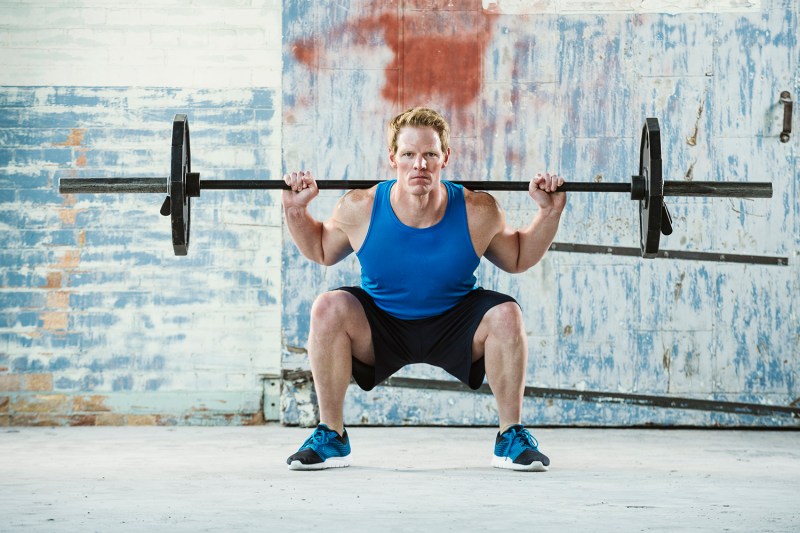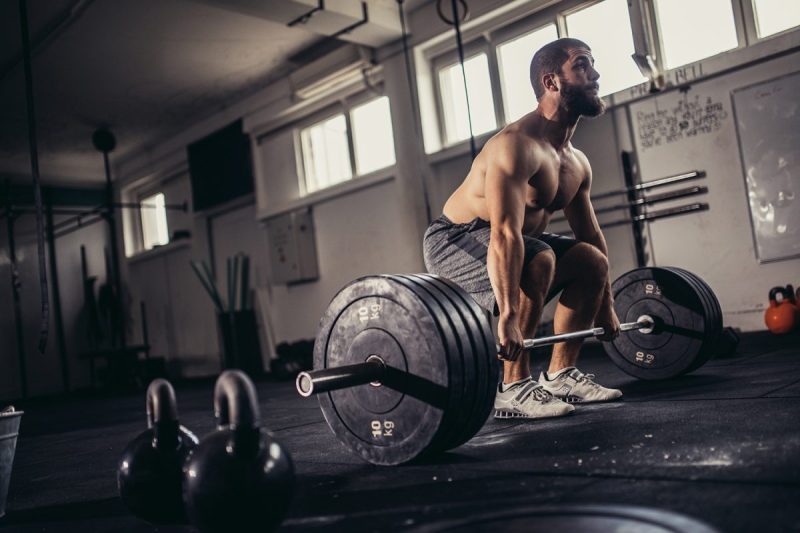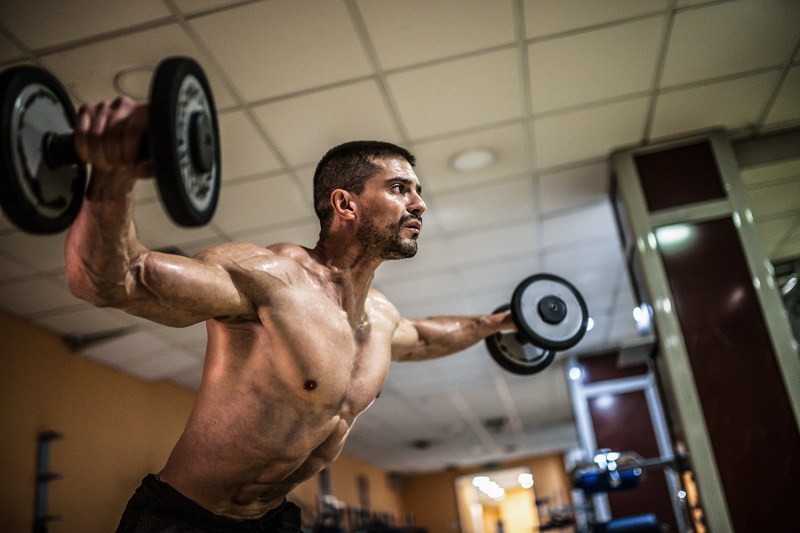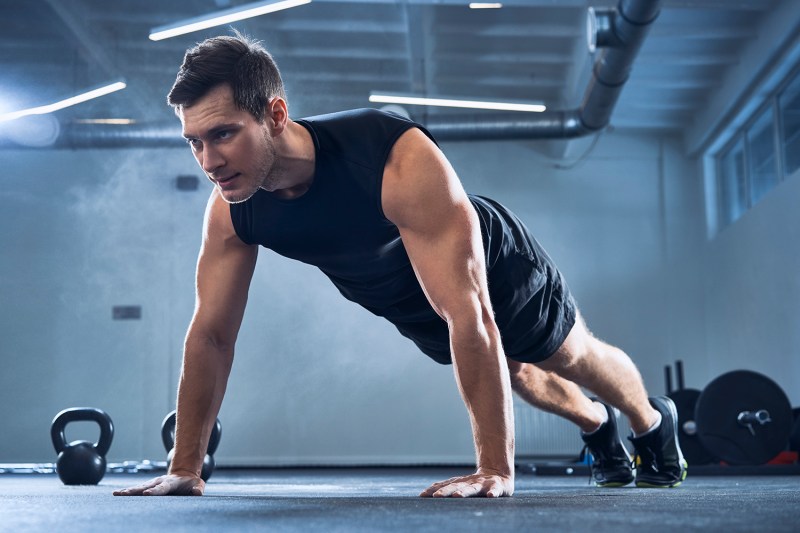
Ask any fitness expert and they would almost unanimously agree on one thing — consistency reigns king. If you’re not consistent, you’ll never reach your goals. By being consistent with some of the best back exercises, you can develop a strong and defined back that gives additional depth and shape to your physique. Here’s the best part, this can also make all the effort you put into your chest, abs, and arms really pop! Not only that, but a nice wide back can also give you the appearance of a slimmer waist, too.
Simply put, your back plays an important function in almost every movement you make, whether it be in the gym or in everyday life. A well-developed back via the best back exercises will definitely improve your posture and reduce neck and back pain, enabling you to run, jump, and play comfortably without having to worry about possible injuries.
Back exercises are one of the best workouts you can try at home or at the gym, but they are often overlooked. This can result in a weak back that’s prone to slipped discs and nagging neck pain. Compound movements that are critical for building muscle via strength training simply cannot be executed without a strong back. It’s the pillar for building a stronger body and having one that is functional, as well as aesthetic, can help stave off injuries later in life.

Meet Kupah James, the co-founder of Bodyweight BootKAMP
Overlooking back workouts is not a mistake fitness pro Kupah James makes, and neither will any of the hundreds of clients he has worked with over his 15 years of professional experience as a trainer. James, the co-founder of Bodyweight BootKAMP and part-time DJ, napping enthusiast, and fitness fanatic, told us: “It is critical to develop a strong, healthy back simply because your back is essentially the most important part of your skeleton — next to your skull, perhaps. It bears the weight of your upper body while stabilizing your balance and kindly houses your central nervous system, which allows signals from the brain to travel throughout your body. If that isn’t reason enough, it’s also a major component to better posture and everyday activities like walking, running, sitting, and lifting. A well-developed back will aid in your quest for that superhero body.”

10 of the best back workouts
So without further ado, here are 10 of the best exercises for the back that you may do if you were to join James’ Bodyweight BootKAMP. But if you don’t, you can do them at home or the gym to get a strong and healthy back.

1. Back-loaded squats
This exercise works just about every single muscle on your legs and up into your lower back, helping build foundational muscles used in myriad exercises and other activities.
- Use about 150% of your body weight on a bar held across your shoulders, palms up under the bar.
- Stand with your knees slightly bent and feet just wider than shoulder-width.
- Squat until your knees bend just past 90 degrees, then rise up to almost erect.

2. Sumo deadlifts
This deadlift variation hits many muscles in the upper back and shoulders, not to mention your quads and glutes. It works the legs less than a traditional deadlift.
- Stand with each foot at least a half-foot wider than shoulder-width.
- Grip the bar with your palms down with a comfortable weight load (start light and add as needed) and your hands at shoulder width.
- Lift until standing upright, legs still wide, then lower and repeat.

3. Back rows
To hit many muscles in the center and upper areas of your back, a back row is a great exercise.
- Stand bent about 45 degrees at your hips, head up, and gripping a bar loaded with challenging weight.
- Lower the bar down and out, roughly below your chin, then lift it up to the top of your abdomen.
- Aim to repeat ten reps, adding or dropping weight as needed.

4. Rear flys
Targeted primarily at the shoulders but also hitting the center back muscles, this is a great exercise to make a regular part of the routine.
- Stand bent 45 degrees at your hips, head up, gripping a low-weight dumbbell in each hand.
- Lift your arms out to the sides until they are parallel to the ground.
- Lower back down to perpendicular, then repeat.

5. Single-arm rows
This excellent exercise works your back, arms, and even your chest. It can safely be performed with higher weight and hits some of those glamour muscles — just keep it steady and in good form.
- Put one knee on a bench (or low wall or step) and rest the same side hand a foot in front of it, palm down.
- With your back roughly parallel to the floor, hold a decently heavyweight in the other hand and let it hang down.
- Complete reps pulling the weight straight up until it reaches your chest.

6. Pullups
Pullups are hard at first and can feel thankless, but they hit almost every muscle in the back and shoulder. Additionally, your count will go up fast, and you can perform them anywhere. For example, you could even throw a towel over a tree branch or grab a deck or banister if you can’t hit the gym.
- With palms facing away, grip a bar with your hands set just outside shoulder width.
- Pull yourself up until your chin is above the bar.
- Repeat as many times as you can.

7. Chin-ups
Chin-ups are easier than pullups, and while they hit fewer back muscles, they tend to challenge your chest and biceps more.
- With your palms facing you, grip a bar with hands set just outside shoulder width.
- Pull your body up until your chin clears the bar.
- Lower until just before your elbows lock, then repeat.

8. Lat pull-downs
This exercise hits the same muscles as a pullup, which is to say almost all of the muscles in your back save the lowest. It’s a great way to ease into pullups as you can opt for lower weights initially.
- On a machine loaded with weight such that you can complete at least ten reps, grip the bar with your hands facing out.
- Pull down until the bar is just below your chin.
- Slowly let the bar rise again, then repeat.

9. Pushups
Classic pushups primarily benefit muscles on your arms and chest, but they strengthen some shoulder and upper back muscles as well and can be performed anywhere with no equipment.
- Lie facedown on the ground and place your hands beneath your shoulders or just outside torso width.
- With your back straight and head up, push yourself up until just before elbow lock.
- Lower until you are an inch off the ground, then repeat.

10. Kettlebell swings
This exercise primarily hits the posterior chain, which are the muscles running from your legs up through your glutes and into your lower back, and it is also good for your core, shoulders, and arms.
- Bend at your hips and bend your knees slightly as you grasp a kettlebell with both hands, palms down.
- Push the kettlebell back between your knees (like snapping a football) and then raise it quickly, swinging the kettlebell up forward to just below shoulder height.
- Repeat without break for a comfortable rep count.

Why you should strengthen your back
“Some of the primary benefits of a back workout are the strengthening of the shoulder and increasing stability,” said James. “Many shoulder injuries can be prevented simply by strengthening your back. Another benefit to back workouts is the positive effect on your posture and balance.”
A strong back offers more support and stability to your shoulders, arms, neck, and head, and it works in tandem with your lower body as well. The more toned and fit your back muscles, the better your whole body will work as a unit. That means better gains in the weight room, faster sprints, longer trail runs, better agility on the court, and the shape you always wanted for yourself, too.
Increasing back strength can also help keep you healthier in the short and long term, staving off both acute and chronic injuries.

Avoid these common mistakes with back workouts
“A common mistake is [a] poor form,” cautions James. “I could never express how important form is to the overall development of any muscle group, and the back is no exception, especially in the back squat, deadlift, and pullup. Those are three I see performed incorrectly all the time, [and] I often can’t help myself and speak up and try to help the best way I can.”
An injured back can bring your overall exercise routine, not to mention much of your life, to a grinding halt, so when performing back exercises, James urges people to “respect the rep and choose form over everything.”
Avoid excessive weight, don’t do too many sets of exercises targeting the same back muscles, and give your body time to rest. You can run, ride, and swim every day of your life, but don’t do back-specific exercises daily. Play around with these different exercises. Pick and choose two to three to focus on once or twice per week for about four weeks. After a month has passed, then focus on a new set and continue the same process.

What muscles do you use when doing back exercises?
Back exercises, such as the ones above, target a wide range of muscles, primarily focusing on the following:
- Latissimus dorsi (lats): These large V-shaped muscles on your back are responsible for pulling your arms down and back. They’re engaged in many pulling exercises like pullups, rows, and lat pull-downs.
- Trapezius (traps): These diamond-shaped muscles run from your neck down to your mid-back and shoulders. They help with shoulder movement and posture and activate during exercises like shrugs, rows, and deadlifts.
- Rhomboids: Located between your shoulder blades, these rhomboid muscles help retract and pull your shoulder blades together. They’re worked in exercises like rows, pullups, and face pulls.
- Erector spinae: This long muscle group runs along your spine and is responsible for supporting your posture and extending your back. It’s engaged in exercises like deadlifts, Supermans, and back extensions.
- Deltoids (posterior head): The back portion of your shoulder muscles, the rear deltoids, help rotate your arms and contribute to shoulder stability. They’re activated in exercises like rows, face pulls, and reverse flys.
Other muscles like the biceps, forearms, and core also get involved in back exercises depending on the specific movement and grip you use.
Editors' Recommendations
- How to do a goblet squat: Your complete guide
- Do you need intra workout carbs?
- How to do skull crushers the right way: The do’s and don’ts you need to know
- How to do lateral raises the right way
- 5 effective resistance band exercises for developed hamstrings



